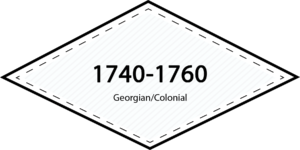
“Age of Enlightenment”
When Old Orders changed to new

—— THE ERA IN BRIEF ——
Women’s roles & garments of all classes & structures were basically the same. As men around the world played with power, intrigue, & rumblings of war, women quietly ran the home & hearth, as they solved the problems of the world over a cup of tea.
 —— PORTRAITS & SKETCHES FROM THE ERA ——
—— PORTRAITS & SKETCHES FROM THE ERA ——


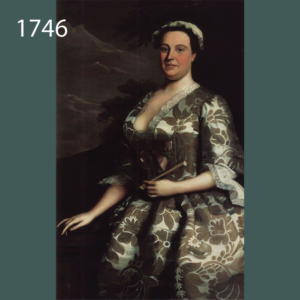
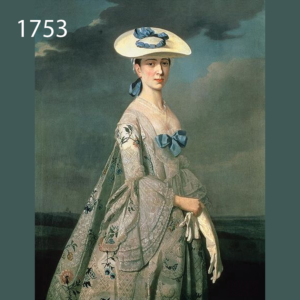
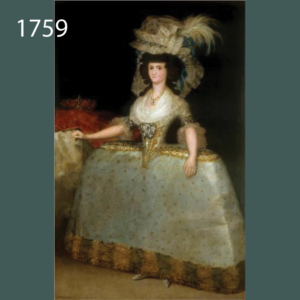
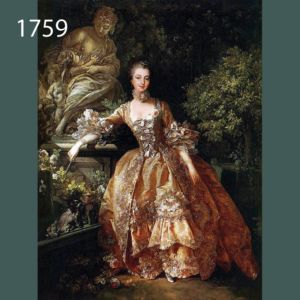

—— WORLD SITUATION ——
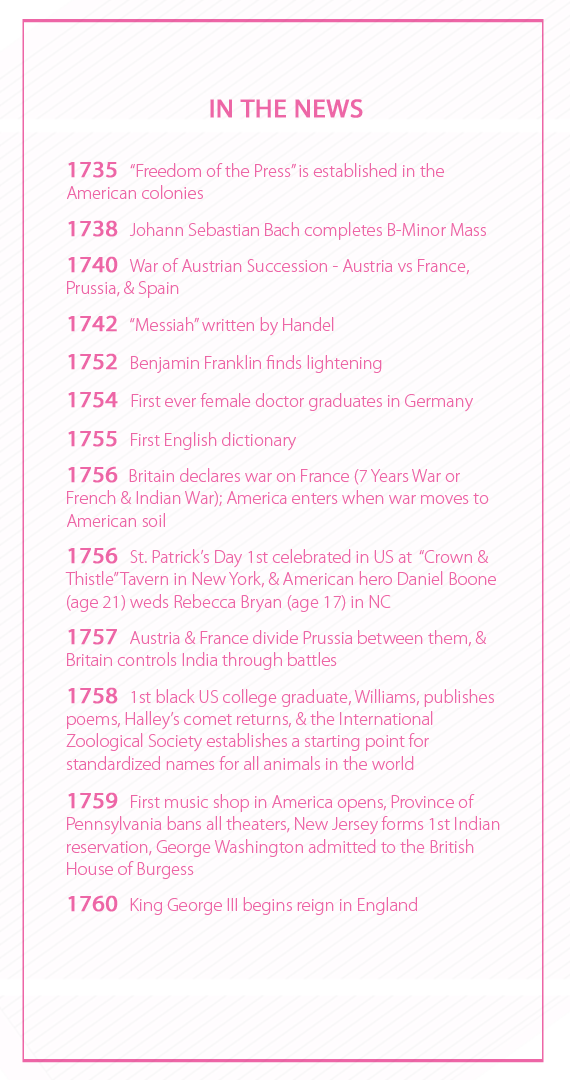
- “Age of Enlightenment” worldwide – old orders to new (American colonies headed to freedom, Russian ascent to power, industry growing)
- Russian court influenced the French & vice versa. Empress of Russia imported all her clothes from France
- Obsession with French culture, language, & dress, especially in Russia. America followed England who was following France
- Gustav of Sweden, along with French & English royalty, required Courtierres to wear huge panniers & volumes of cloth to boost their economy
- Intrigue of the French court influenced fashion worldwide
- Madame Pompadour, mistress to the French king & her French designer led world fashion
- The 18th Century overall was a peak of achievement & high point in history, especially for ordinary people. Travel & transport, innovation, unification, & communication within & between countries made for sharing of ideas
- Classes communicated between each other; artists like Hogarth depicted everyday life as well as depicting royalty, so there was more understanding & less distinction when it translated to fashion
- What started as the “age of wool”, ended up “the age of cotton” through due to trade, availability, cost, & other factors political & economical
- England led the world with cotton production by 1750 because they had technology in weaving & spinning, & imported cotton cheaply from India (by 1820 it would be America)

—— FACTS OF LIFE AT THE TIME ——

- Tailors held the highest status of all trades & occupations in the world other than King (next in line: weavers, shoemakers), until mechanization in the 1750’s threatened their trade & they pushed back by destroying equipment. A tailor was always a man, who hand sewed EVERYthing
- Women did sew, even nobility who sewed, made shirts to give to the poor, but sewing overall was more remaking & repairing than creating.
- All girls were taught fine sewing & embroidery & handicrafts.
- Home sewing tapered off with the increase of traveling salesmen through the era, but rose up again with the advent of the sewing machine in 1861 because sewing could be done in the home easily & inexpensively with a machine
- The milliner was a woman, & it was she who provided undergarments & accessories
- Only men were permitted to make stays (& later corsets) because of the strength it took to hand sew bones, leather, & the thick multiple layers of fabric required
- A mantua-maker was what a dressmaker was called in this era and until the end of the 1800’s. They made the loose gowns of light weight & easy to sew fabric.
- The first women’s guilds in history were mantua-makers.
- The mantua-maker could have a shop, but more often stayed at the customer’s house as a “daily dressmaker” for as long as she & her assistants were needed to remake, repair, or prepare clothing for upcoming seasons
- Typically, the customer bought the fabric & notions for the professional to work with
- There were no patterns & no written documents, pictures, or drawings to follow. They replicated existing garments & used them as patterns – taking them from place to place & modifying them
- The apprentices to did the tedious work
- This replication of existing garments is a big reason most innovations were done through experimentation in draping on the person, and not through a creative design process that was sold or communicated as would be done later in history through publications, dolls, patterns, or design houses
- This creative process through draping is also why this was one of the hardest eras to replicate historical methods; especially without the customer constantly present for fittings
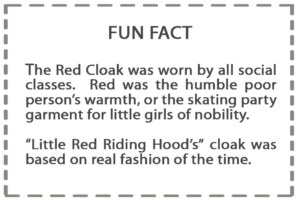

—— FASHION TRENDS ——
- Early in the century, it was the opinion nature had made the waist too large, so stiff stays were strongly laced.
- Early in the 1700’s, it was indecent to be naked 2″ below the neck
- Towards this middle of the century, they decided the waist wasn’t big enough, and waists were supplemented, gathered in voluminous fabric, so that every woman & child looked pregnant.
- By the 1760’s, small waists became the fashion again.
- By the 1760’s, fashion dictated that the most breast possible should be exposed
- As women started to make garments instead of men, & new fabrics & methods became available, women’s garments got softer & prettier
- Fashion was much the same between women of all classes. Form, shape, silhouette were based on the same mantua gown
- Differences indicating class, station, or purpose came in fabrics, quality, & quantity as well as accessories & decoration to delineate between master & servant; urban & rural, etc.
- Women did not have working “uniforms”; just versions of the same ensemble
- The “bedgown” (having nothing to do with “bed”), was the basic one piece garment. It was made of flannel or wool early; later of cotton.
- The red cloak crossed classes. Red was a humble poor person’s warmth in the country, or a party outfit for girls of nobility (“little red riding hood” stepped up social position in the 1820’s)
- Bonnets were popular because even if a woman couldn’t afford a dress, she could splurge on a hat. They would buy untrimmed forms & change the decorations themselves.
- Caps were, however, a class status symbol. They were worn to dress occasions as well as every day; largely because the woman didn’t have to do anything with her hair, which was basically unwashed in this time period
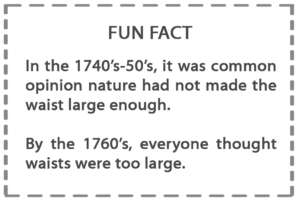
 —— SPECIFICS ——
—— SPECIFICS ——
GOWNS & STRUCTURES
- What started as the “bedgown”, & then the “mantua”, had by 1750 stylized into “robe al la francaise” or “doll cake”
- The loose “sacque” or “sack” gown was the standard for all garments for women, from which to deviate. An authentically made sack took 20 yards (fabric was 22″ in width) in loose folds from neck to hemline
- Following the French Court, as the period progressed, the basic gown was taken to extremes using ornamentation and understructures
- Panniers, huge bone structures to hold up the sides of the gown , grew to be 8′ across
- Polonnaise (skirts) accommodated the wide width, & were made with side draping or pleating
- The front & back of the gown were still flat (the width of the woman)
- More & more ornamentation & frills were added to the basic gown. In 1750, in addition to pleating & draping were added ruffs, ruffles, laces, bows, aprons, hair decorations, jewelry, aprons, puffs, braids, & ornamented edges
- Early in the era, fabrics were woven with wide stripes with stiff, well draping silks (in the 1720’s & 1730’s these were introduced, & there was some carryover into the ’40’s and ’50’s). They put as few seams as possible, and cut panels straight to let the fabric be show off
- In the 1760’s, stripes in the fabric weave narrowed and had floral sprays. Silks became lighter in weight & so integrated into the design more than just straight paneled
- Dye processes were still limited, although weaving processes became more complex, creating new types of patterns such as the chine pattern, where fabric was dyed and then the warp thread woven in
- The Silhouette got more slender and used pleats instead of draping as era progressed
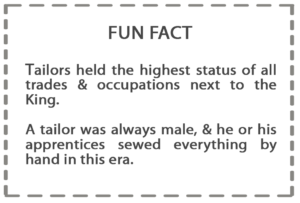
 —— REAL SAMPLES OF GARMENTS FROM ERA ——
—— REAL SAMPLES OF GARMENTS FROM ERA ——
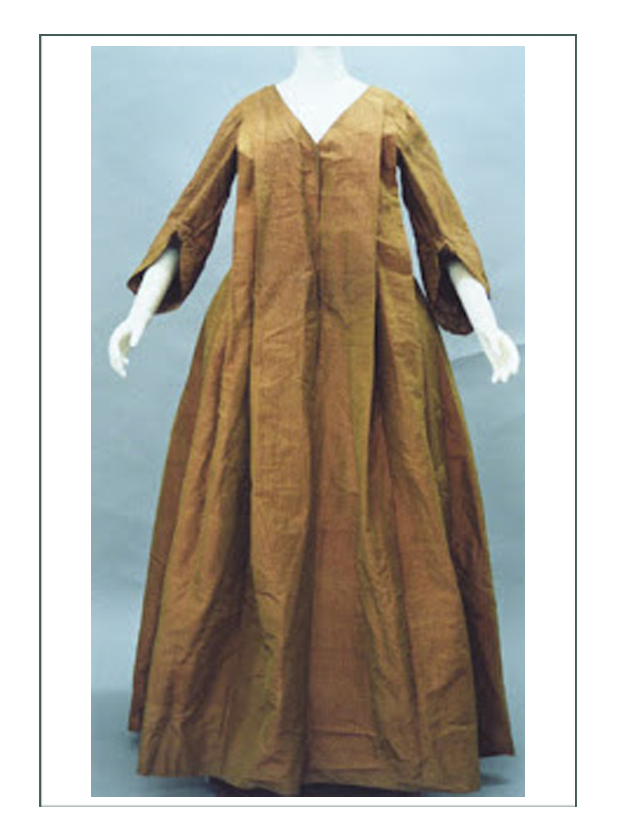
—— (above) “Robe Battante 1730’s” ——
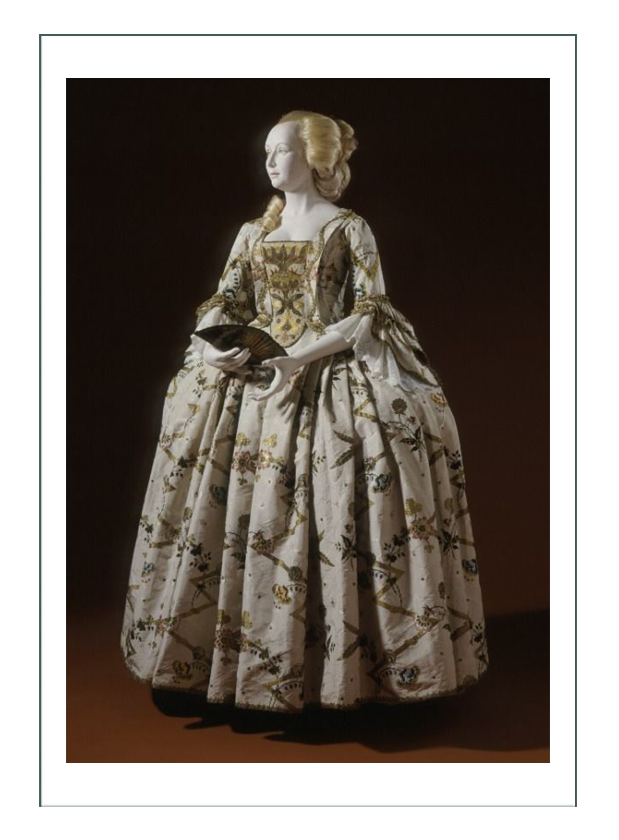
—— (above) “Mantua 1735” ——
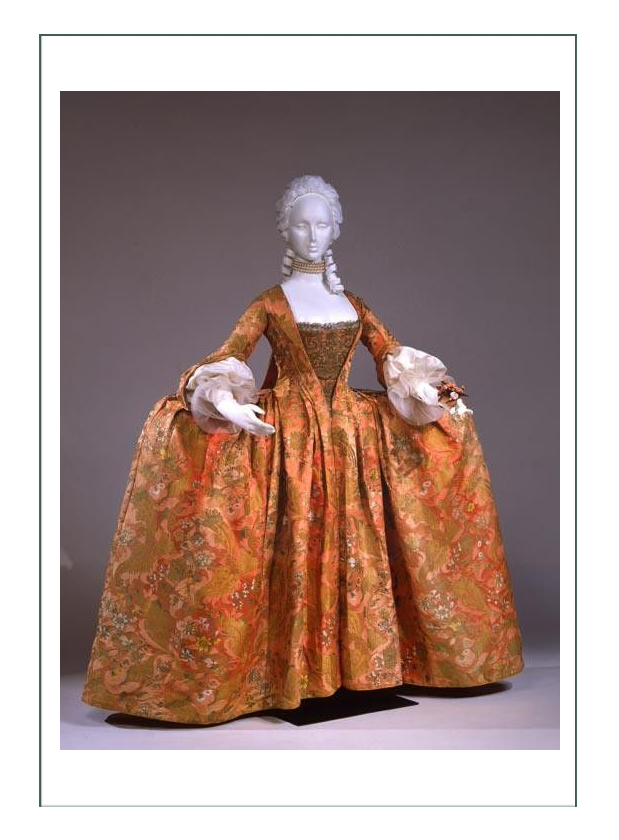
—— (above) “Robe a la francaise 1745” ——
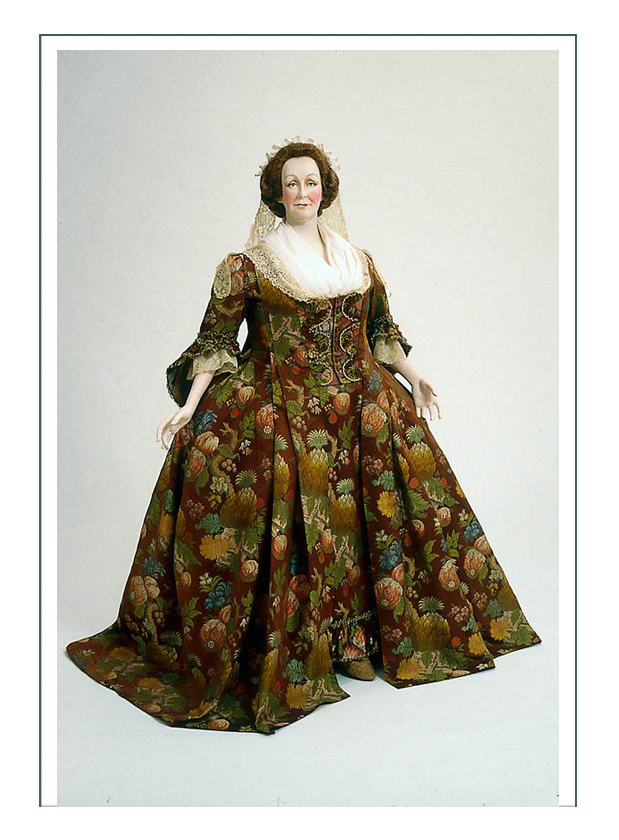
—— (above) “Artistic Style 1750’s” ——
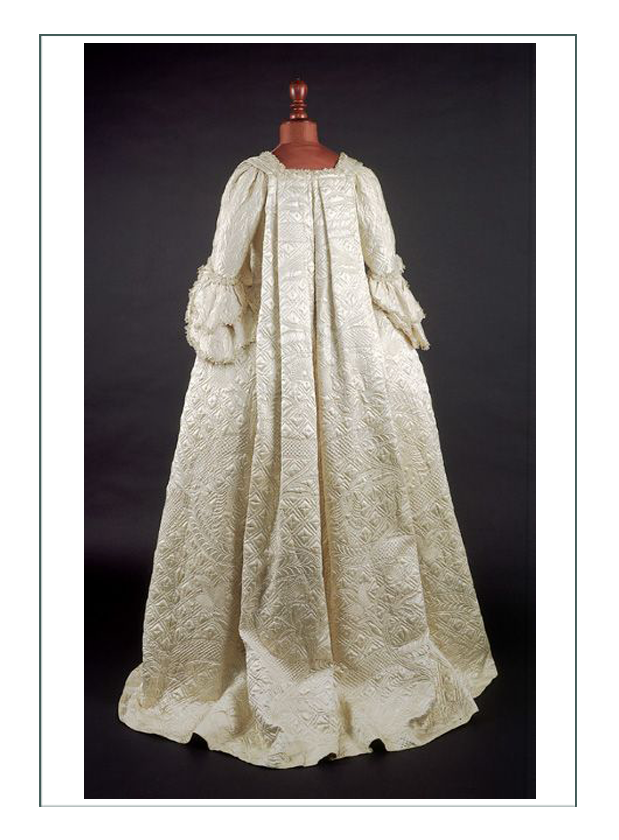
—— (above) “Sack Back Robe 1753” ——
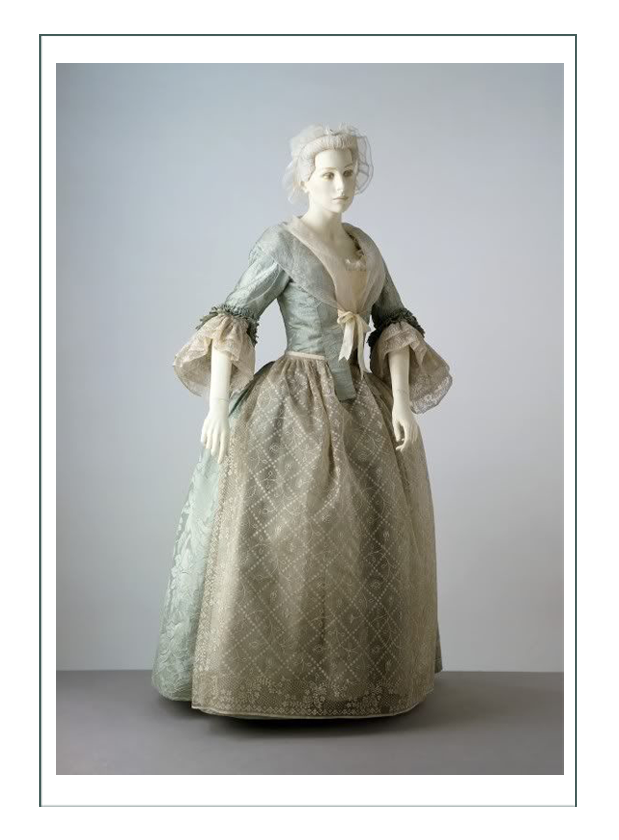
—— (above) “Sacque 1760” ——
Click date below to go to a different era. We can replicate most ANY garment you see!

